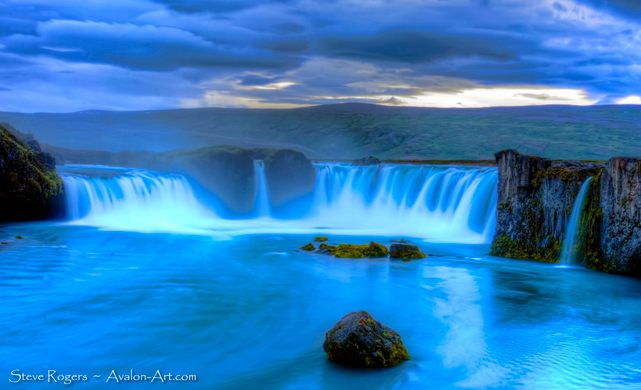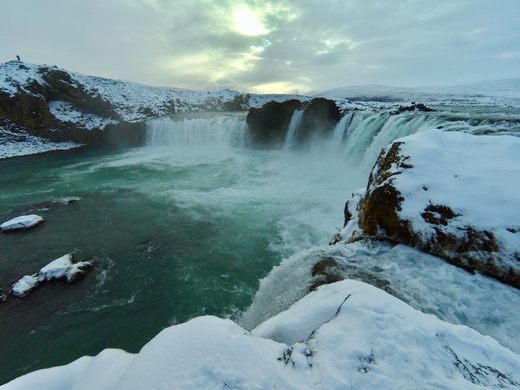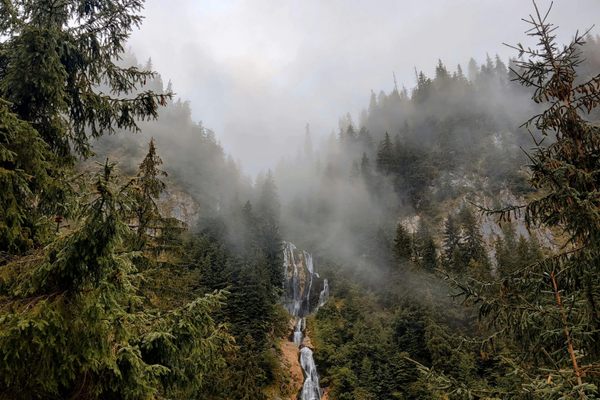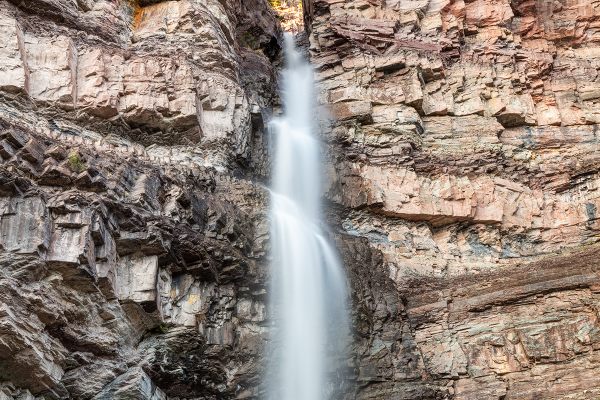The story of the Goðafoss (Waterfall of the Gods) is that of Iceland’s remarkably democratic conversion to Christianity in the year 1000.
The question before the Althing parliamentary assembly in that year was whether Iceland should embrace Christianity, or continue in “the old custom.” The assembled lawmakers were bitterly divided. According to the Íslendingabók, a civil war was narrowly avoided through the leadership of a man named Þorgeir Ljósvetningagoði. After a day and a night of meditation, Ljósvetningagoði, who was himself a pagan priest, decided in favor of Christianity. The compromise brokered by the Althing left pagans able to practice in private, even though Christianity became Iceland’s official religion.
Following his monumental decision, Ljósvetningagoði formally converted to Christianity. To demonstrate his new faith, he threw idols of the old Norse gods into this waterfall, giving it its name. A thousand years later, a church named after Ljósvetningagoði was built nearby, complete with a stained glass window depicting his dramatic effigy disposal.
Today, Godafoss remains one of the largest and most beautiful waterfalls in Iceland, running through Bárðardalur and Kinn in the country’s northeastern corner. At 30 meters wide and curving gently along a semicircular rim, it falls 12 meters into a frothing pool - a sight for the gods in more ways than one.




































Follow us on Twitter to get the latest on the world's hidden wonders.
Like us on Facebook to get the latest on the world's hidden wonders.
Follow us on Twitter Like us on Facebook